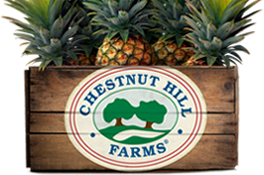Winter begins early this year. At least that is the feeling at the moment in the pineapple farms. There were two cool nights in week 45. With air temperatures dropping to 19 and 18 degrees C. These temperatures are always worrisome as they could be the cause of naturally differentiated fruit (NDF) development. NDF is always a period of stress for the pineapple producers because NDF generates additional costs, creates a production peak in the entire industry and, even when managed very well, this fruit is not completely homogeneous due to the higher age variability at harvest. We trust we have escaped NDF in the first two cool nights mentioned as they were not accompanied by rain. So, the soil temperature was not significantly reduced and the day time temperatures were in the high 20’s. This means the growing degree days (GGD;s) did not drop significantly. GGD’s is simply defined as the heat units that are available for growth.
Up until week 47, the rains have been very favorable now for many weeks and as a result the fruit has had good internal color, firm flesh with brix above 14 and essentially no problems with translucency. However, in week 47 it appears that the period of heavier rains has begun with 4.2 inches recorded during the week.
This period of cloudy days, higher rainfall and lower night temperatures is a challenge to all pineapple producers. This is the period when NDF can occur. It is a time when harvest age must be increased to maintain good brix and good internal color. This is also the time it is very difficult to obtain good external color due to lack of sunny days. A combination of all of these factors can produce undesirable levels of translucency, so the neccesary increase in harvest age must be done with much precaution to avoid this undesirable defect.
You can believe that we will be looking each morning to see the temperature during the night. When it drops too low, we must begin sampling soon after to determine the extent of the NDF. If NDF is found we must ready the crews who must mark each NDF plant with a different color ribbon for each NDF week to minimize the age variability of this fruit at harvest time.
Here in our farms we now have 10 years of experience under our belt and we never stop learning. We now do many things to reduce the NDF potential which proved very beneficial in 2010. With the leanings from 2010 we feel that we are even better prepared for the NDF challenges in 2011 and the resulting effect will be less variation in the weekly fruit volumes.
Dr. Lloyd


